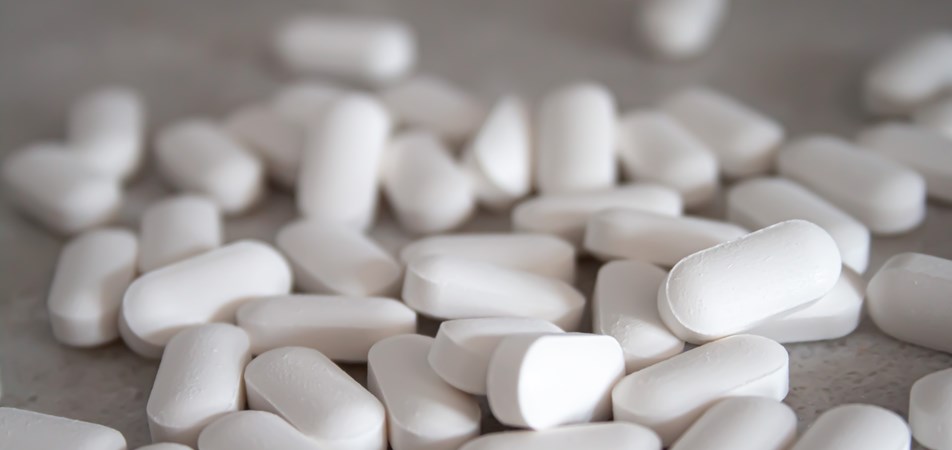To recover your password please fill in your email address
Please fill in below form to create an account with us

30/08/22
Statin therapies are not the cause of muscle pain in over 90% of those who experience symptoms, according to a new study led by researchers from the Cholesterol Treatment Trialists’ Collaboration. The results were published today in The Lancet and presented at the European Society of Cardiology Congress.
The study demonstrated that muscle pain or weakness is common in adults, regardless of whether they take a statin tablet or not. For every 15 reported cases of muscle pain or weakness, 14 were not due to statin therapy. For every 15 reported cases of muscle pain or weakness, 14 were not due to statin therapy, and those cases that were due to statins occurred mainly within the first year of treatment.
The researchers gathered together data from 23 large-scale randomised studies including information from almost 155,000 individuals. They used this information to assess the effect of statin treatments on the frequency of muscle-related symptoms across many different types of patient.
KEY FINDINGS:
|
|
|
|
|
Professor Colin Baigent, Director of the Medical Research Council Population Health Research Unit at the University of Oxford, and joint lead author of the study, said ‘Cardiovascular disease including heart attacks and strokes, is the world’s largest killer, responsible for around 18 million deaths each year. High levels of LDL (‘bad’) cholesterol are a major risk factor. Statins lower LDL-cholesterol levels and have been repeatedly proven to reduce the risk of cardiovascular disease. However, there have been concerns about muscle pain, and statins can, rarely, cause severe muscle problems.
‘Our research shows that, for most people taking a statin, any muscle-related symptoms they experience will not in fact be due to the statin itself – and so the potential benefits of statin therapy are likely to outweigh the muscle pain risks. Previous reports that statins are a major cause of muscle pain are likely to have been the result of studies not including a control/placebo group.’
Dr Christina Reith, Senior Clinical Research Fellow at Oxford Population Health and joint lead author of the study, said: ‘Rates of cardiovascular disease are rising rapidly, particularly in low- and middle-income countries. Statin therapies are affordable and widely available, and are a key tool in helping to prevent avoidable disability and death. We hope that these results will help doctors and patients to make informed decisions about whether to start or remain on statin therapy and that information provided to doctors and patients will be reviewed in light of our study results.’
All of the trials included in the analysis were large-scale (involving at least 1000 participants) and of reasonably long duration (tracking patient outcomes for at least two years). The trials were also all double-blind, meaning that neither the trial participants nor those managing the participants or leading the study knew who was receiving which treatment, to avoid potential biases due to knowledge of treatment allocation.
In 19 of the trials, participants were randomly allocated to receive either statin treatment or a placebo, whilst in four trials the comparison was of higher doses of statins versus lower/moderate doses. Around 124,000 participants (average age 63 years) were involved in the 19 trials comparing statins to a placebo.
The researchers looked at all data about any adverse effects reported by individuals taking part in the clinical trials, as well as data on the timing of and reasons for stopping study treatment, use of other (non-trial) medications, other health conditions, and laboratory results that would help in the interpretation of particular adverse events.
Professor Anthony Keech, Director of Cardiovascular Research at NHMRC Clinical Trials Centre, University of Sydney, and one of the co-leads of the Cholesterol Treatment Trialists Collaboration, along with Professor John Simes here in Sydney, said ‘The large body of evidence from these randomised trials across a very wide cross section of people with and without cardiovascular disease, provides a clear picture that while statins are associated with a small increase in risk of muscle pains or weakness, they do not cause the majority of muscle pain symptoms commonly associated with them. This should provide reassurance to the many taking these drugs that have been proven to protect against new heart attacks and strokes.'
The study was conducted by the Cholesterol Treatment Trialists’ (CTT) Collaboration, a joint initiative coordinated between the National Health and Medical Research Council Clinical Trials Centre, University of Sydney, Australia and the Clinical Trial Service Unit & Epidemiological Studies Unit, Oxford Population Health, on behalf of academic researchers representing major statin trials worldwide. The work was funded by the British Heart Foundation, UK Medical Research Council, and the Australian National Health and Medical Research Council. The work of the CTT is overseen by an Independent Oversight Panel.